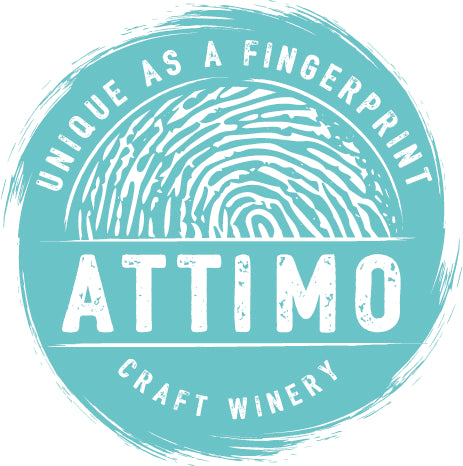Introduction to Green Packaging in the Wine Industry
The wine industry has long been associated with elegance and tradition. From vineyards to the dinner table, we often picture wine as a luxurious indulgence, but little thought is given to the whether wine production is actually good for the environment.
As concerns about climate change and our carbon footprint grow, it's essential to examine the environmental impact of our favorite pastime. Enter green packaging - a sustainable alternative to traditional wine bottle packaging that reduces waste and saves resources.
In recent years, the wine industry has begun to recognise the importance of sustainable practices. From organic, sustainable farming to energy-efficient wineries, many producers are working towards a greener future. One area with significant potential for improvement is wine packaging. Traditionally, wine has been sold in glass bottles, which, while recyclable, still have a significant environmental impact. To address this issue, the industry has begun exploring alternative packaging options, such as wine boxes and eco-friendly bottles, that have a smaller footprint.
In this article, we'll explore the environmental impact of traditional wine packaging and discuss the benefits of wine boxes and other sustainable alternatives. We'll also examine the role of innovation in driving change and how consumer perception and adoption are crucial to the success of green packaging in the wine industry. Finally, we'll provide guidance for wineries looking to transition to more sustainable packaging solutions.
The Environmental Impact of Traditional Wine Packaging
Wine bottle packaging has long been dominated by glass, a material that is both recyclable and reusable. However, the production of glass bottles consumes a significant amount of energy and resources, and their weight contributes to higher transportation emissions. Furthermore, while glass is recyclable, the recycling process is energy-intensive and often results in a lower-quality product. This means that many glass bottles ultimately end up in landfills, where they can take hundreds of years to break down.
The environmental impact of wine bottle packaging goes beyond glass, however. Corks, capsules, and labels all contribute to the waste generated by the wine industry, and many of these materials are not easily recyclable. Additionally, the process of producing, shipping, and disposing of wine packaging generates greenhouse gas emissions, which contribute to climate change.
To mitigate these impacts, the wine industry needs to explore more sustainable packaging alternatives that reduce waste, conserve resources, and lower emissions.
Wine Boxes: A Sustainable Alternative to Glass Bottles
One such alternative is wine boxes, which offer several environmental benefits over traditional glass bottles. Wine boxes, or bag-in-box packaging, consist of a plastic bag filled with wine and housed in a cardboard box. This design significantly reduces the weight of the packaging, which in turn decreases transportation emissions.
Wine boxes also have a smaller environmental footprint when it comes to materials usage. The production of cardboard and plastic is less resource-intensive than glass, and both materials are easily recyclable. Additionally, the bag-in-box design helps to minimise wine spoilage, as the bag collapses as wine is dispensed, limiting the product's exposure to oxygen.
Another advantage of wine boxes is their space-saving design, which allows for more efficient shipping and storage. This, in turn, helps to reduce the overall environmental impact of wine distribution. Overall, wine boxes represent a more sustainable and eco-friendly alternative to traditional glass bottles.
Comparing Sustainability: Glass vs. Plastic vs. Alternative Packaging
As the wine industry looks to reduce its environmental impact, a key question emerges: is glass or plastic better for the environment? While both materials have their advantages and disadvantages, alternative packaging options such as wine boxes and eco-friendly bottles offer a more sustainable solution.
Glass is often seen as the more environmentally friendly option, as it is infinitely recyclable and does not leach harmful chemicals. However, its production and transportation are energy-intensive, and recycling rates remain low. Plastic, on the other hand, is lightweight and requires less energy to produce but is derived from non-renewable fossil fuels and often ends up in landfills or oceans.
Alternative packaging, such as wine boxes and eco-friendly bottles made from materials like Frugalpac, offer a more sustainable solution. These options reduce weight, save space, and use fewer resources in their production, while still providing a high-quality wine experience. Ultimately, the most sustainable choice will depend on factors such as transportation distances, recycling rates, and overall environmental impact.
Benefits of Frugalpac and Other Eco-Friendly Wine Packaging Options
Frugalpac is one example of innovative alternative packaging for wine. Made from recycled paper, the Frugalpac bottle is lightweight and has a carbon footprint up to six times lower than glass bottles. The bottle is also recyclable and decomposes more quickly than traditional glass, reducing waste and environmental impact.
Other eco-friendly wine packaging options include plant-based plastics, which are derived from renewable resources such as corn or sugarcane, and biodegradable materials like PLA (polylactic acid). These alternatives offer similar benefits to Frugalpac, reducing the environmental impact of wine packaging while still providing a high-quality product.
By adopting these innovative packaging solutions, the wine industry can significantly reduce its environmental footprint and contribute to a more sustainable future.
How Wine Boxes Contribute to a Circular Economy
A circular economy is one in which materials are continually recycled and reused, reducing waste and conserving resources. Wine boxes can play a key role in promoting a circular economy within the wine industry.
The materials used in wine boxes, such as cardboard and plastic, are both recyclable, meaning they can be reprocessed and used again in new products. This helps to reduce waste and conserve resources, as well as lower greenhouse gas emissions associated with the production of new materials.
Additionally, the bag-in-box design of wine boxes helps to minimise wine spoilage, ensuring that less product is wasted. This, in turn, reduces the overall environmental impact of wine consumption.
By adopting wine boxes and other sustainable packaging options, the wine industry can move towards a more circular economy, promoting environmental responsibility and resource conservation.
Consumer Perception and Adoption of Alternative Wine Packaging
For sustainable wine packaging to succeed, it's crucial that consumers embrace these eco-friendly options. While wine boxes have been popular in some markets, they have faced challenges in gaining acceptance among many consumers, who often associate them with lower-quality wines.
To combat this perception, wineries and packaging companies must work to promote the environmental benefits of wine boxes and other alternative packaging, as well as ensure that the quality of the wine is not compromised by the new packaging format. This may involve investing in research and development, as well as marketing and consumer education efforts.
As consumers become more aware of the environmental impact of their choices and seek out more sustainable options, the adoption of wine boxes and other eco-friendly packaging is likely to grow, helping to drive change within the industry.
How Wineries Can Transition to Greener Packaging Solutions
For wineries looking to adopt more sustainable packaging, there are several steps they can take to transition to greener solutions:
- Assess current packaging: Evaluate the environmental impact of your current packaging, considering factors such as materials, transportation emissions, and waste generation.
- Research alternatives: Explore alternative packaging options, such as wine boxes or eco-friendly bottles, and assess their environmental benefits and potential impact on product quality.
- Develop a plan: Create a plan for transitioning to more sustainable packaging, including timelines, resource allocation, and potential partnerships with packaging suppliers or other industry stakeholders.
- Implement changes: Begin implementing the new packaging solution, monitoring its impact on both the environment and product quality.
- Communicate benefits: Promote the environmental benefits of your new packaging to consumers, highlighting your commitment to sustainability and encouraging them to make more eco-friendly choices.
By taking these steps, wineries can successfully transition to more sustainable wine packaging, helping to reduce their environmental impact and contribute to a greener future.
Conclusion: The Future of Sustainable Wine Packaging
As concerns about climate change and pollution continue to grow, it's crucial that the wine industry embraces more sustainable packaging options. Wine boxes and other alternative packaging solutions offer significant environmental benefits over traditional glass bottles, helping to reduce waste, save resources, and lower emissions.
Innovation will play a critical role in driving change within the industry, as new materials and designs offer even more eco-friendly options for consumers. As consumer perception and adoption of these sustainable packaging solutions grow, the wine industry can move towards a more circular economy, promoting environmental responsibility and resource conservation.
So, raise a toast to green packaging and the bright future of sustainable wine packaging. By embracing eco-friendly options, wineries can reduce their environmental impact and contribute to a more sustainable future. The benefits of sustainable wine packaging extend far beyond the environment, with cost savings, improved product quality, and increased consumer loyalty among the potential rewards.
As the wine industry continues to explore innovative packaging solutions, it's essential that producers remain committed to sustainability and work to educate consumers about the benefits of eco-friendly options. By taking a holistic approach to sustainability, wineries can reduce their environmental impact, promote resource conservation, and create a more resilient and responsible industry.
So, the next time you raise a glass of wine, consider the packaging it came in and the impact that choice has on the environment. With sustainable options like wine boxes, cans and cardboard bottles, you can enjoy your favorite vintage while helping to protect the planet for generations to come.


